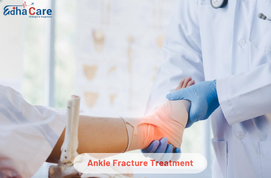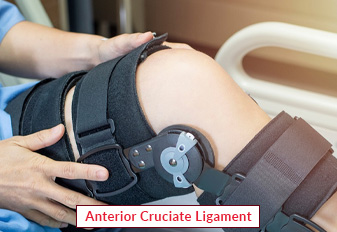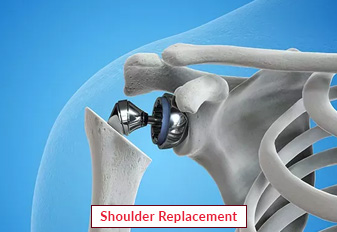Ankle Fracture Treatment

Ankle fracture treatment aims to realign the fractured bones and promote healing. Treatment options for a fracture may include non-surgical techniques such as immobilization with a brace or cast, elevation, and rest, depending on how severe the fracture is. A surgical procedure may be required to align bones with screws as well as plates, or rods in more complicated fractures. To regain the ankle joint's strength, range of motion, and flexibility, physical treatment is frequently advised. To minimize long-term consequences, promote a full recovery, and enable people to resume their normal activities, prompt and proper treatment is essential.
Book an AppointmentAbout Ankle Fracture Treatment
Symptoms: Extreme discomfort, bleeding, swelling, incapacity of putting weight on the injured ankle, deformity, and problems moving the joint at the ankle are all signs of a fractured ankle.
Causes: Traumatic events including falls, twisted injuries, or injuries directly to the ankle are the main causes of ankle fracture. The ankle joint's bones may crack or break as a result of these events.
Treatment: The initial step in treating a fractured ankle is to immobilize the damaged ankle by using a brace, cast, or splint to stabilize it. Taking over-the-counter painkillers, elevating the afflicted limb, and using cold packs to minimize swelling can all help manage symptoms. For serious fractures, however, treatment can be required.
Procedure of Ankle Fracture Treatment
Diagnosis: To determine the extent and severity of the fracture, X-rays, a physical examination, and occasionally further imaging tests like MRI or CT scans are used to diagnose ankle fractures.
Immobilization: In order to stop additional damage and encourage recovery, the fractured ankle is first immobilized with a splint, cast, or boot.
Reduction: A medical professional may need to move or "reduce" crooked or misplaced bones back into their proper positions. Sometimes manual labor is required for this, or surgery may be necessary.
Surgical Intervention: In cases involving severe displacement or complicated fractures, surgery can be required. Open reduction and internal fixation (ORIF) is a surgical method in which the bones are straightened and secured with rods, plates, or screws.
Bone Healing: The bones progressively mend over time after reduction or surgical repair. Depending on how severe the fracture is, this process may take from weeks to months.
Physical Therapy: To restore strength, flexibility, and function to the ankle joint after the initial healing phase is over, physical therapy is frequently recommended.
Rehabilitation: To help restore mobility and resume regular activities, weight-bearing exercises and activities are gradually introduced as healing advances. Scheduling routine follow-up consultations with a healthcare provider is imperative to oversee advancement and guarantee appropriate recovery.
Require Assistance?
Get A Quick Callback From Our Healthcare Experts
Other Specilities We Cover

Anterior Cruciate Ligament (ACL)

Hip Replacement




